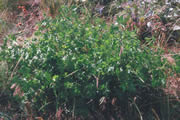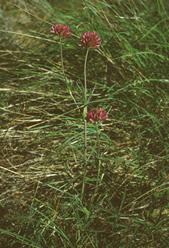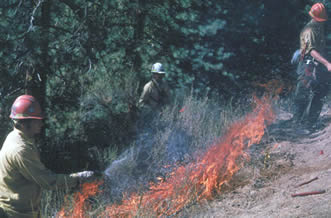|
Dissertation
Abstract
I conducted a series of studies to investigate the ecology of Iliamna
longisepala and Trifolium thompsonii, two rare plants
that occupy historically frequent-fire environments in north central
Washington. Field, greenhouse, and laboratory studies were used to explore
the seed ecology of Iliamna. Field and greenhouse studies were
used to understand the role of competitive interactions and shading
by overstory trees on persistence, growth, and reproduction of Trifolium.
Field experiments were used to study effects of season of burning on
survival, individual performance (plant size, morphology, reproduction),
and population size structure of both species.
Iliamna had a persistent seed bank with seed densities greater
in sites that burned 10 yr earlier than in those that burned more recently
or in the distant past. Heating by fire was sufficient to break seed
dormancy. Fall burning stimulated abundant germination but spring burning
did not.
Trifolium exhibited no particular germination requirement and
had a limited seed bank. In a 3-yr field experiment, survival of mature
Trifolium was greater when associated species were removed
and surviving plants allocated more to reproduction (flower heads) than
did control plants. Performance of mature Trifolium plants
was comparable in shaded (30% ambient light) and non-shaded plots, but
similar levels of shading significantly reduced shoot and root mass
of seedlings.
In experimental burns (fall or spring), survival of mature Iliamna
plants was uniformly high. Although occasional dormancy in Trifolium
precluded an assessment of its survival, plant densities were comparable
before and after treatment suggesting high survivorship. At one of three
sites, fall burning stimulated abundant germination of Iliamna.
For both species most measures of plant performance were unaffected
by season of burn.
In
combination, these results suggest that both species depend on fire,
but in different ways. Iliamna requires fall burning to stimulate
germination and populations may decline in the absence of fire. Trifolium
does not maintain a seed bank, nor is heating necessary to induce germination.
However, burning reduces competition from associated species and limits
overstory development which is detrimental to seedlings. Prescribed
burning should be an effective tool for long-term maintenance of Iliamna
and Trifolium populations.
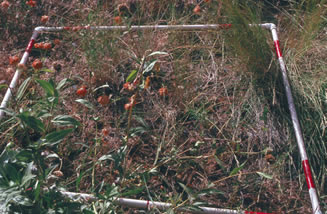
Trifolium population monitoring plot
|
|
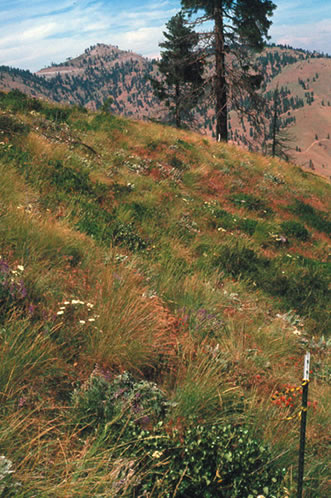
Burch Mountain study site used to test of effects
of spring and
fall burning on population dynamics of Iliamna and Trifolium.
|
